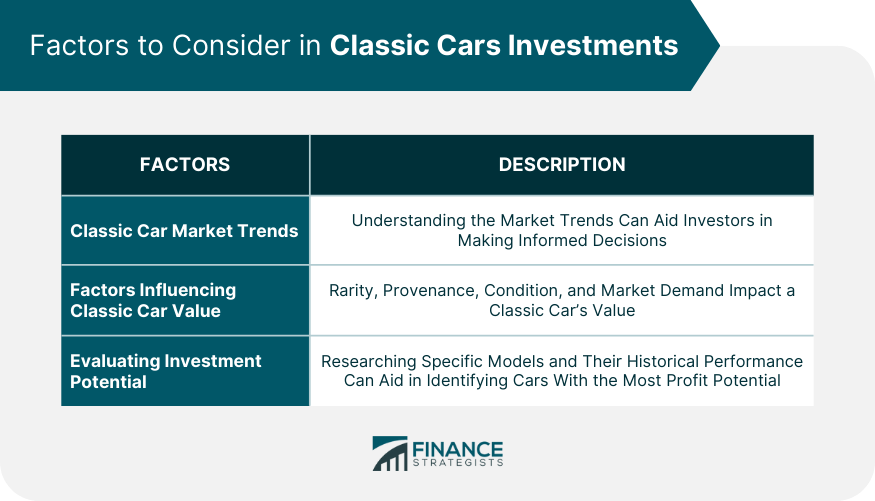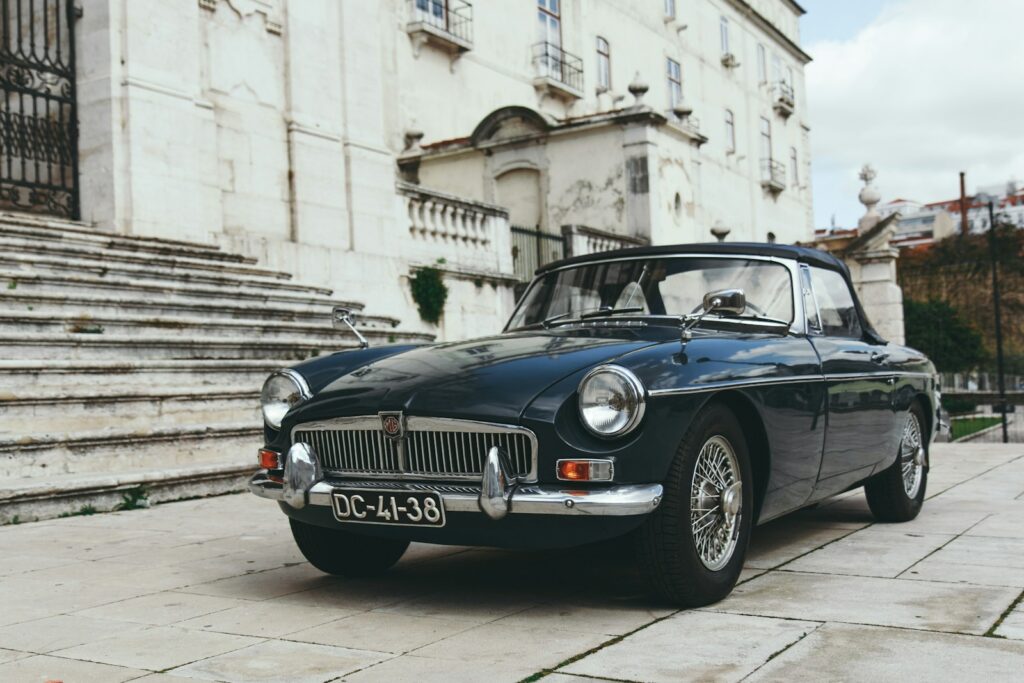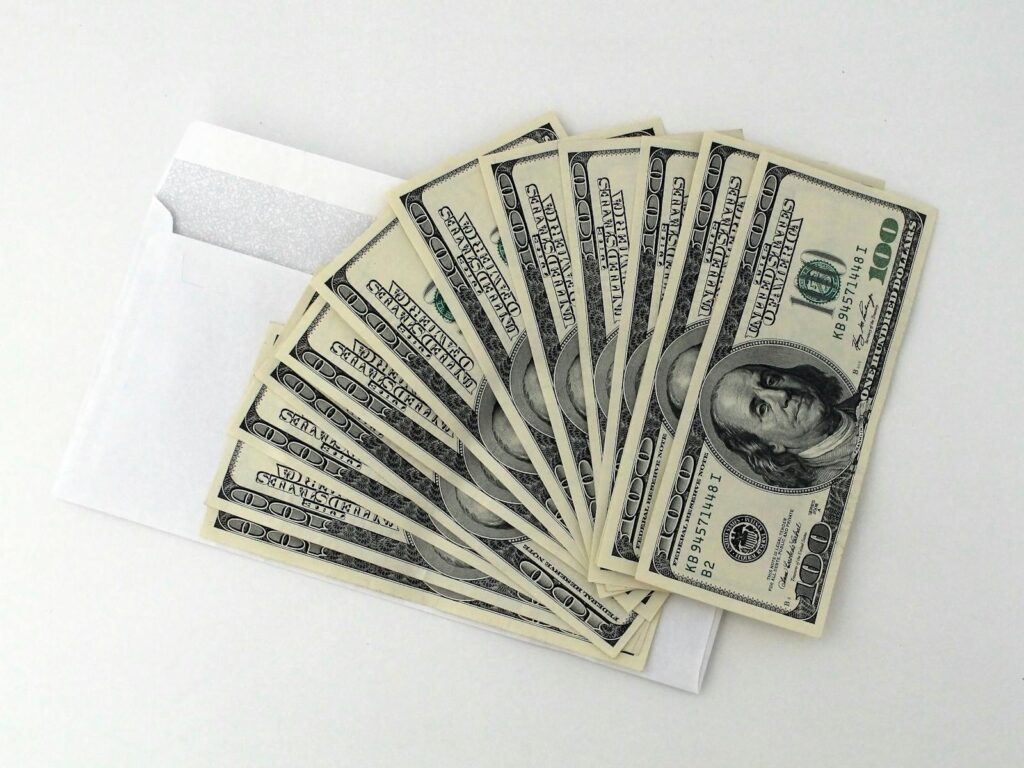The allure of classic cars is undeniable, captivating enthusiasts with their nostalgic charm, distinctive craftsmanship, and the vibrant community that surrounds them. For many, these vintage vehicles represent more than just a passion; they are seen as tangible assets with the potential for appreciation, offering a unique blend of personal enjoyment and financial return. However, like any investment, the world of classic cars comes with its own set of complexities and significant risks that can transform a dream acquisition into a financial burden.
While some classic models have indeed multiplied in worth over decades, the market is far from a guaranteed path to riches. The romantic notion of a gleaming vintage automobile steadily gaining value can often overshadow the practical realities of ownership, leading many prospective investors down a costly path. It is crucial for anyone considering adding a classic car to their portfolio to approach this decision with a clear understanding of the potential pitfalls.
This comprehensive guide, tailored for classic car owners and enthusiasts, delves into some of the most challenging investments and financial hazards that can impact the value and enjoyment of these cherished vehicles. Drawing on expert insights, we will identify specific models known for their performance or reliability issues and limited resale value, alongside broader financial risks that can erode your investment. Our goal is to empower you with the objective, detailed, and practical advice necessary to make informed decisions and safeguard your financial interests in the fascinating, yet sometimes treacherous, classic car market.

1. **Maserati Biturbo (1982 to 1988)**:The Maserati Biturbo, produced between 1982 and 1988, might initially appeal to the budget-conscious collector looking for an exotic badge at a seemingly affordable price point. However, expert mechanic Stamatis Zotos explicitly warns against this classic vehicle, citing a poor reputation concerning its build quality and significant reliability issues. This seemingly accessible entry into Italian luxury often conceals a much higher long-term cost of ownership than anticipated.
The core problems of the Biturbo stem from a history of turbo failures and pervasive electrical issues. These mechanical and electronic vulnerabilities combine to make the car notoriously expensive to maintain and repair. What might seem like a bargain purchase can quickly turn into an endless money pit, as specialized parts and expert labor are required to address its frequent ailments.
For an investor or enthusiast, the high cost of keeping a Maserati Biturbo running reliably can quickly negate any perceived initial savings or potential for appreciation. Its inherent design flaws and manufacturing inconsistencies mean that ongoing expenses are not just a possibility, but a virtual certainty. Therefore, despite its appealing badge and unique styling, the Maserati Biturbo stands out as a classic car that often fails to deliver a sound financial return, highlighting the importance of looking beyond superficial appeal to true long-term costs.
Read more about: From Icons to Afterthoughts: 12 Once-Desirable Cars That Lost Their Luster
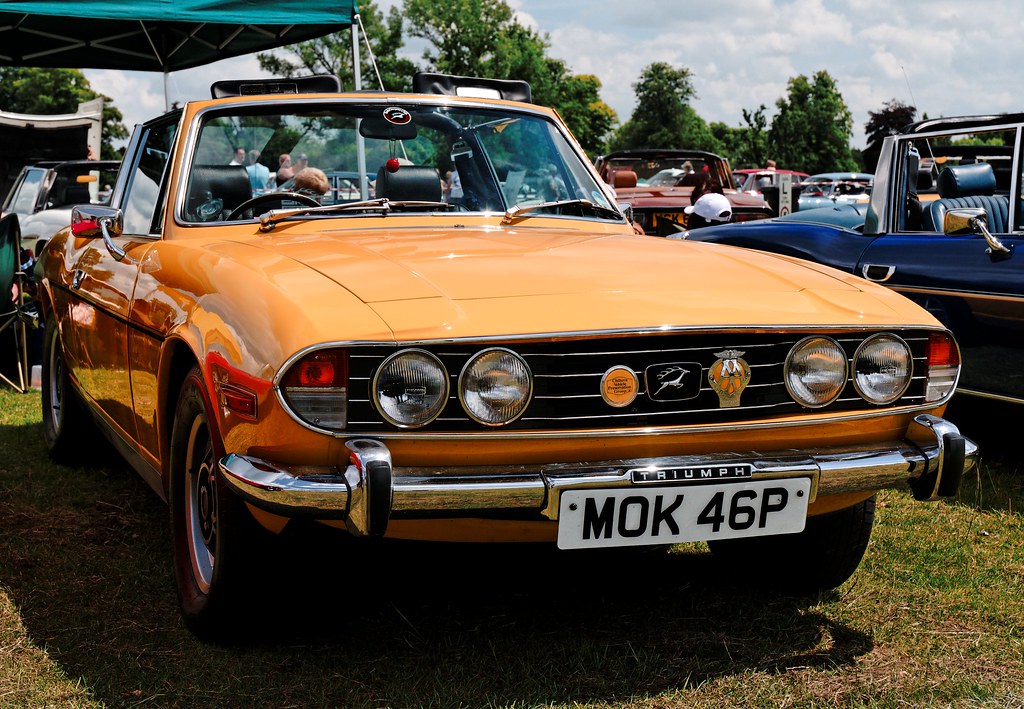
2. **Triumph Stag (1970 onwards)**:When the Triumph Stag was first launched in the UK in 1970, it was met with considerable enthusiasm, making a significant splash at international car shows. Its distinctive look and initial appeal created high demand among auto enthusiasts and collectors, which, unfortunately, also led to inflated prices at the time. This initial market fervor, however, did not translate into enduring reliability or value.
Over time, the Triumph Stag has become notoriously known for its mechanical unreliability. This reputation primarily arises from a fundamental design flaw: an engine that frequently overheats. As Stamatis Zotos points out, “Although it has a distinct look and is initially appealing… the original 3.0-liter V8 had chronic overheating issues, often leading to head gasket failures and other costly repairs.” Such recurring, significant mechanical problems make it a challenging and expensive vehicle to own.
The persistent overheating problems, culminating in head gasket failures, mean that owners face recurrent and substantial repair bills. This ongoing financial drain significantly cuts into any potential investment value and adds immense frustration. For those seeking a classic car that offers a reasonable blend of enjoyment and financial stability, the Triumph Stag’s chronic mechanical issues position it firmly as an investment to approach with extreme caution, if not outright avoidance.
Read more about: Future Classics on a Budget: 10 Modern Muscle Cars Destined for Automotive Immortality

3. **Chevrolet Camaro (1976 to 1981 Models)**:The Chevrolet Camaro is undeniably an iconic American muscle car, with its legacy deeply embedded in automotive culture. However, not all Camaros are created equal, especially when viewed through an investment lens. Specifically, models produced between 1976 and 1981 are widely considered classics, yet they have suffered from a notable share of problems that diminish their desirability and financial viability for collectors.
Andy Saari, a master automotive technician, advises against investing in these particular classic Camaros. He highlights that “These vehicles suffered from poor build quality, lackluster engines and were heavily impacted by the implementation of tighter emission regulations.” This combination of factors meant that the cars from this era did not live up to the performance heritage of earlier models, nor did they possess the quality needed for long-term preservation.
The poor build quality, combined with engines that lacked power and efficiency due to stricter emission standards, collectively impacted the Chevrolet Camaro’s overall value. This is especially true when compared to its more celebrated predecessors or subsequent generations. The necessity of expensive repairs and ongoing maintenance on these less robust vehicles further cuts deeply into any potential investment or resale value, making the 1976-1981 Camaro a challenging proposition for the financially astute classic car owner.
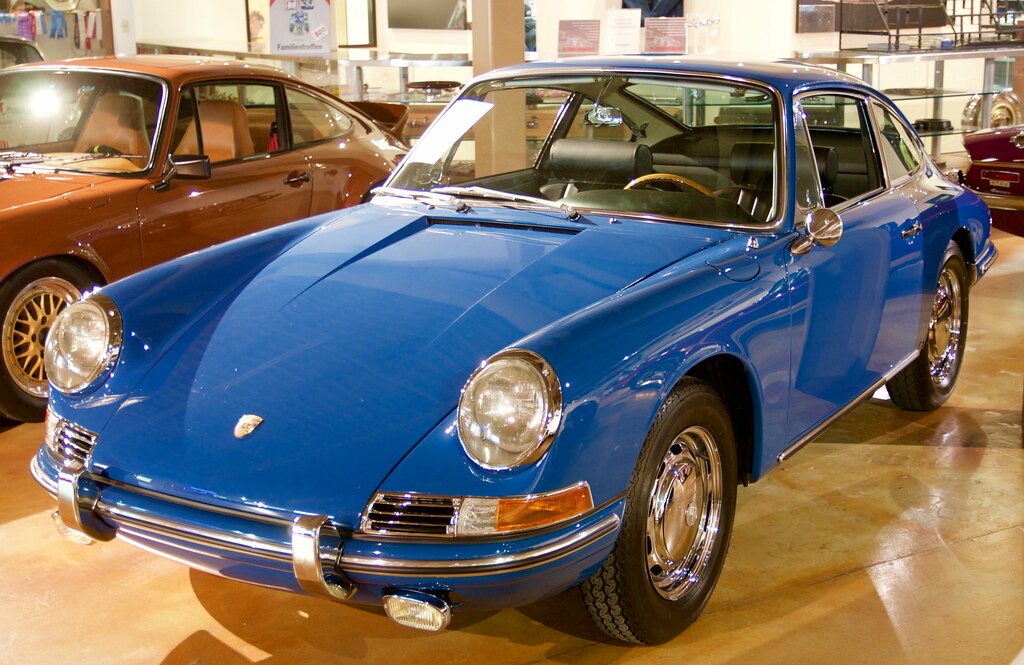
4. **Early Porsche 911s (Around 1969 or Earlier)**:While modern iterations of the Porsche 911 are highly sought after and often command premium prices, early models, specifically those built around 1969 or earlier, present a different story for potential investors. Master automotive technician Andy Saari recommends steering clear of these initial models, citing an array of shortcomings that can lead to significant financial headaches and driving challenges.
A primary concern with these early 911s revolves around their handling characteristics. Saari explains, “The 911’s short wheelbase and rear-engine layout led to a tendency for sudden oversteer, making them tricky to handle at high speeds.” This idiosyncratic behavior, while adding to their mystique for some purists, makes them less predictable and potentially more dangerous for the average classic car driver, thereby limiting their broad appeal and practical enjoyment.
Beyond handling, these earlier 911 models are also prone to severe rust and related damage, which can make their restoration exceedingly expensive. Rust, a pervasive enemy of vintage vehicles, can compromise structural integrity and aesthetic appeal, necessitating costly and intricate repairs to bring the car back to a desirable state. The combination of tricky handling, rust susceptibility, and the ensuing high restoration costs significantly dampens their appeal as a sound financial investment, especially compared to their later, more refined brethren.
Read more about: 14 Classic Luxury Autos Young Professionals Are Smartly Avoiding: Unpacking the Hidden Costs and Why They Pass on These Status Symbols

5. **The AMC Pacer (1975 to 1980)**:The AMC Pacer, an American classic produced between 1975 and 1980, certainly had a distinct presence during its era. Its unconventional design and unique features made it a “cool car back in its day,” as acknowledged by dealer principal Peter Niebling. However, despite its nostalgic appeal, the Pacer is unlikely to be a worthwhile investment in the current classic car market, largely due to a range of inherent structural and performance issues.
Niebling describes the Pacer as “more comprehensive than a tank,” alluding to its considerable weight and robust, albeit flawed, construction. This hefty build contributed to its poor power and performance, especially when coupled with issues related to steering. These fundamental mechanical and design shortcomings translate into a less-than-desirable driving experience in modern contexts, failing to meet the expectations of contemporary classic car enthusiasts.
Furthermore, the AMC Pacer is highly prone to rust, a critical factor that can severely undermine the long-term value and condition of any classic vehicle. Rust damage is costly to repair and can compromise the structural integrity of the car, making it a liability rather than an asset. Niebling’s candid assessment, “Let’s be honest — they’d make terrible rides to own now,” succinctly captures why this once-distinctive vehicle represents a poor financial choice for today’s classic car investor.
Read more about: Beyond the Hype: Unpacking 15 Infamous Rides That Earned a ‘Jerk Car’ Reputation Among Enthusiasts
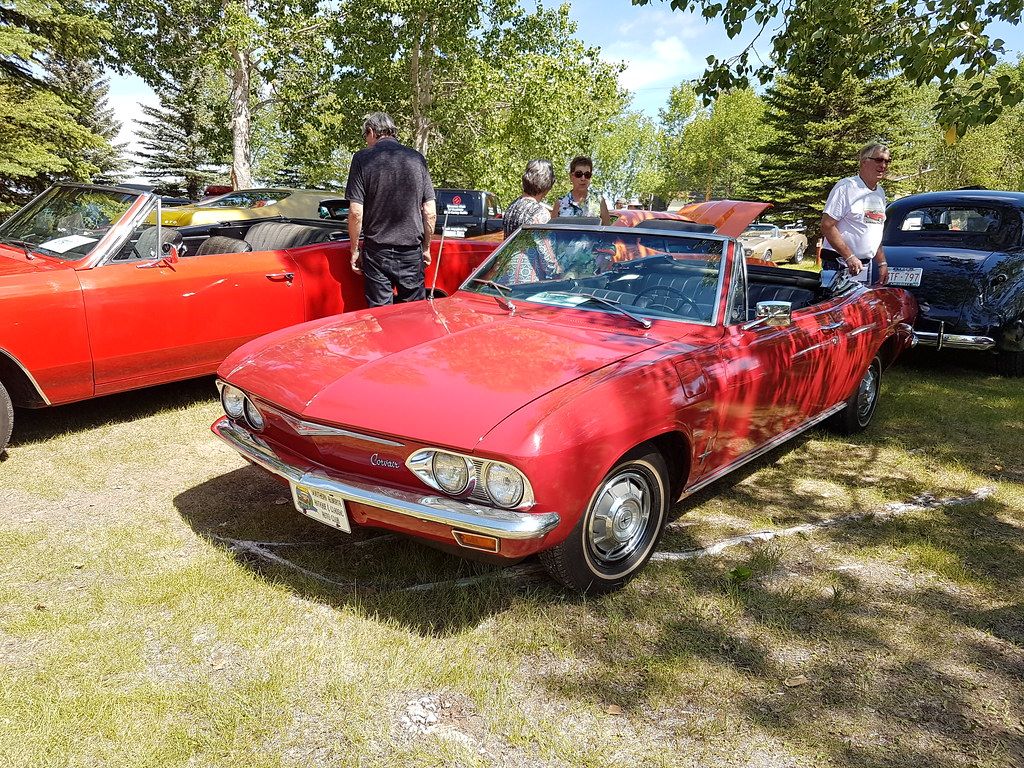
6. **Chevrolet Corvair (1960 to 1969)**:The Chevrolet Corvair, manufactured between 1960 and 1969, stands as another classic car that, while perhaps intriguing in concept, proves to be a questionable financial investment today. Its rear-engine design, a novelty for American production cars, initially sparked interest. However, as Peter Niebling observes, “The Corvair seems neat with its rear-engine design… But handling those things couldn’t have been more sketchy.” This notorious handling characteristic became a significant point of contention and safety concern during its production run.
Beyond its tricky handling, owning a Corvair today can quickly become an extremely expensive endeavor. A major challenge lies in sourcing the correct parts for repair and maintenance. Niebling notes that “Getting the right parts for repair purposes can be tricky and expensive,” a common refrain for many obscure or problem-ridden classic models. The scarcity and specialized nature of these components drive up costs, turning routine upkeep into a substantial financial drain.
The combination of its historically questionable handling and the prohibitive costs associated with finding and acquiring necessary repair parts makes the Chevrolet Corvair a classic car to approach with caution. While its unique engineering might appeal to a niche segment of collectors, the practical realities of ownership, maintenance, and potential safety issues firmly place it on the list of classic car investments that are unlikely to yield positive returns or a hassle-free ownership experience.
Read more about: Beyond the Hype: Unpacking 15 Infamous Rides That Earned a ‘Jerk Car’ Reputation Among Enthusiasts
7. **Triumph TR7 (1974 to 1981)**:The Triumph TR7, a UK sports car produced from 1974 to 1981, initially presented a sleek and modern aesthetic that was quite striking upon its debut. Peter Niebling recalls, “The TR7 looked slick when it first dropped.” This visually appealing design, however, masked a deeper set of issues that have significantly impacted its long-term reliability and investment potential. The car’s cool appearance proved to be largely superficial when confronted with the realities of its build quality.
Unfortunately, the TR7 quickly gained a reputation for being unreliable, plagued by numerous electrical issues and frequent mechanical breakdowns. Niebling plainly states, “But it turned out to be unreliable, with many electrical issues and stuff breaking down.” These persistent problems meant that owners were constantly battling faults, leading to considerable frustration and financial outlay. The constant need for repairs directly undermines the enjoyment and practicality of owning such a vehicle.
Further compounding the problem for TR7 owners is the difficulty in sourcing replacement parts. “Good luck finding replacement parts, too,” Niebling warns, highlighting a common predicament for classic cars with known reliability issues and limited production runs. While the TR7 may have met the safety standards of its era, it also suffered from certain safety issues, such as poor brakes, which are not uncommon for older classic cars but can severely “put a serious dent in your return on investment” due to necessary upgrades or the inherent risks involved. This combination of unreliability, parts scarcity, and safety concerns makes the Triumph TR7 a classic car that is best avoided by those seeking a sound financial investment.
Our exploration into the classic car market’s less-than-stellar investments doesn’t stop with the first seven models. As we continue to dissect the potential financial hazards, it becomes clear that informed decision-making is paramount for anyone considering these vintage treasures. Beyond specific problematic vehicles, classic car ownership also exposes investors to broader financial risks that can significantly erode their capital and enjoyment. Understanding these overarching concerns is just as vital as scrutinizing individual models.
We now turn our attention to four more classic cars that often prove to be poor financial choices, followed by an in-depth look at four critical financial risks—high maintenance costs, storage vulnerabilities, market volatility, and the omnipresent threat of fraud—that every classic car owner must comprehend to truly protect their cherished investment.
Read more about: The Costly Truth: 14 Classic Cars That Are Simply Not Worth Restoring for the Savvy Enthusiast

8. **Cadillac Eldorado (1980 to 1985)**:The Cadillac Eldorado, specifically models produced between 1980 and 1985, holds a complicated place in automotive history. While it might evoke a sense of classic American luxury, its reputation among seasoned mechanics and collectors is, unfortunately, quite mixed. These particular iterations of the Eldorado faced a barrage of mechanical issues that significantly hampered their long-term value and reliability, quickly diminishing any initial appeal they might have had.
Master automotive technician Andy Saari explicitly warned against these models, stating, “These models faced various mechanical issues, including engine and transmission problems.” Such widespread and critical component failures are not minor inconveniences; they represent deep-seated engineering and manufacturing flaws that translate directly into substantial and recurring repair bills. For a classic car owner, addressing fundamental issues like engine and transmission failures can quickly become an overwhelming financial burden, far outweighing the car’s perceived value.
Compounding these inherent mechanical weaknesses, the 1980-1985 Cadillac Eldorado also suffered from shifting consumer preferences and a noticeable decrease in demand. This combination of internal reliability problems and external market disinterest caused the value of these vehicles to plummet. Investors seeking appreciation or even stable value will find these particular Eldorados to be a challenging proposition, as their historical performance indicates a clear trend of depreciation rather than growth, making them a cautionary tale in the world of classic car investments.
Read more about: Recall These? The Ultimate Showdown: 12 Coupes That Went From Hot to Humiliating in the Great American vs. European Car Wars

9. **Ford Mustang II (1974 to 1986)**:The Ford Mustang is an undeniable icon, deeply ingrained in American culture, but not every chapter of its history represents a golden era for collectors. The Ford Mustang II, produced from 1974 to 1986, is a prime example of a model that proves to be “hit-and-miss” when evaluated as an investment. While it holds a place in the Mustang lineage, its financial viability is often overshadowed by significant shortcomings compared to its more celebrated predecessors.
According to automotive technician Andy Saari, a primary drawback of this model was its performance. Saari noted, “This model lacked the performance and appeal of its predecessors, leaving it overshadowed and underappreciated.” This statement speaks volumes about a vehicle that was designed to carry the Mustang badge but failed to deliver the expected muscle and driving thrill that defined the brand. The performance deficit directly impacts its desirability for enthusiasts and collectors who often prioritize power and handling in a classic muscle car.
Consequently, the Mustang II’s struggle for performance and appeal translates directly into a relatively low overall market value. Unlike other Mustang generations that have seen steady appreciation, the Mustang II often struggles to command strong prices, making it a less attractive option for those seeking a sound financial return. For investors, choosing a classic car that is “overshadowed and underappreciated” means risking limited resale potential and a difficult path to recouping initial costs, urging careful consideration before investing in this particular iteration of the legendary pony car.
Read more about: 14 Classic Luxury Autos Young Professionals Are Smartly Avoiding: Unpacking the Hidden Costs and Why They Pass on These Status Symbols
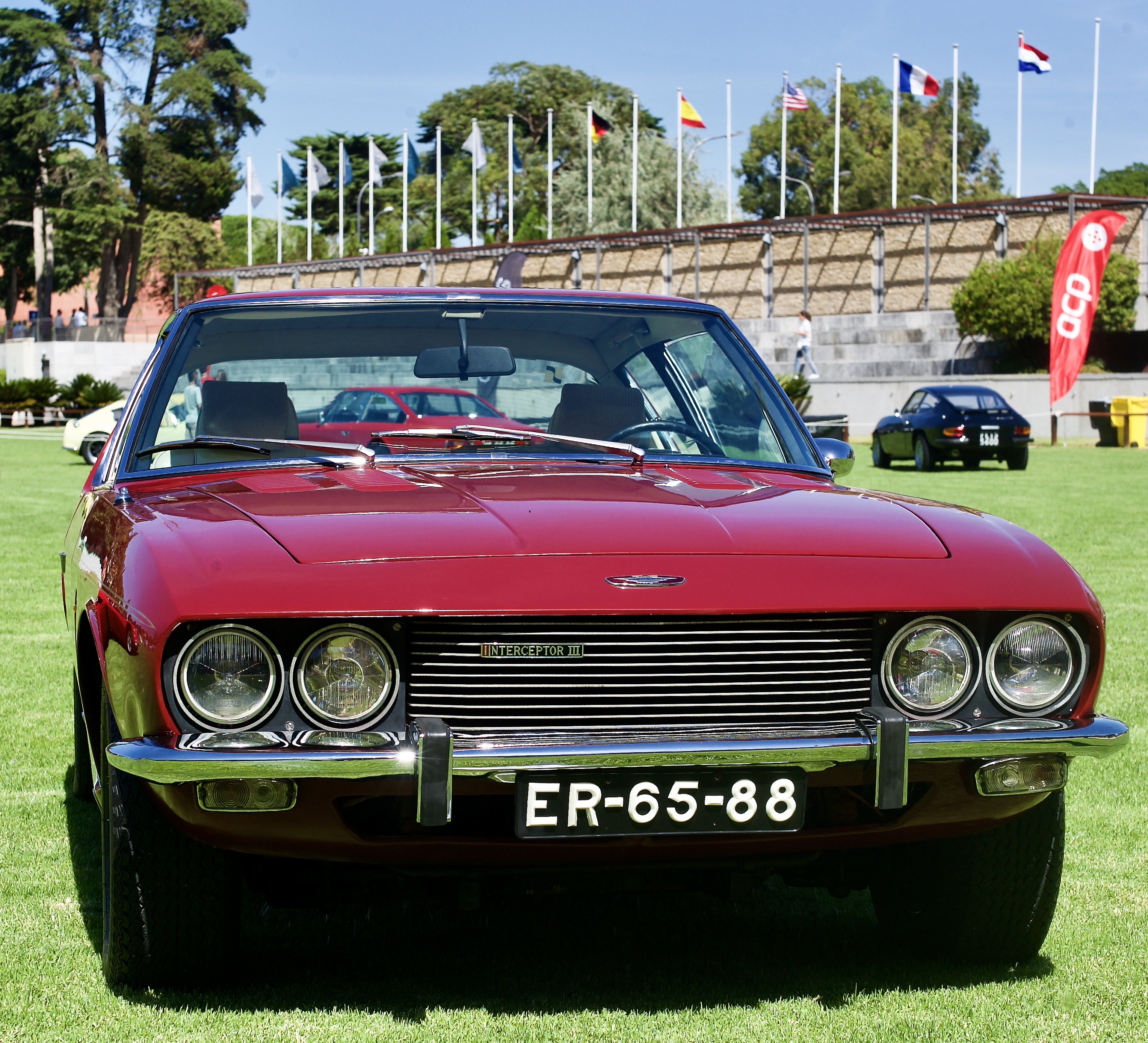
10. **Jensen Interceptor (1966 to 1976)**:The Jensen Interceptor, manufactured between 1966 and 1976, possesses a distinctive British GT charm and undeniable road presence. Its elegant design and powerful V8 engine (often Chrysler-sourced) initially appealed to a niche market looking for a blend of luxury and performance. However, beneath its stylish exterior lie several substantial issues that can quickly turn a dream acquisition into a significant financial drain, making it a classic car that demands extreme caution from potential investors.
One of the most pressing concerns for the Jensen Interceptor is its pronounced susceptibility to rust. Expert mechanic Stamatis Zotos specifically highlighted that this model “is also prone to rust issues.” Rust is a pervasive and insidious enemy of vintage vehicles, capable of severely compromising not only the car’s aesthetic appeal but also its structural integrity. Addressing extensive rust damage requires costly, specialized restoration work, which can quickly inflate ownership expenses and severely undermine the vehicle’s long-term value.
Further adding to the financial impracticality of owning a Jensen Interceptor is its high fuel consumption. In an era where fuel efficiency is a significant consideration, this classic’s thirst for gasoline makes it an expensive vehicle for anything beyond occasional, short drives. Its impracticality for everyday use, combined with the continuous battle against rust and the associated repair costs, positions the Jensen Interceptor as a classic car that, despite its charms, represents a considerable and often prohibitive investment for the financially prudent collector.
Read more about: 14 Classic Luxury Autos Young Professionals Are Smartly Avoiding: Unpacking the Hidden Costs and Why They Pass on These Status Symbols
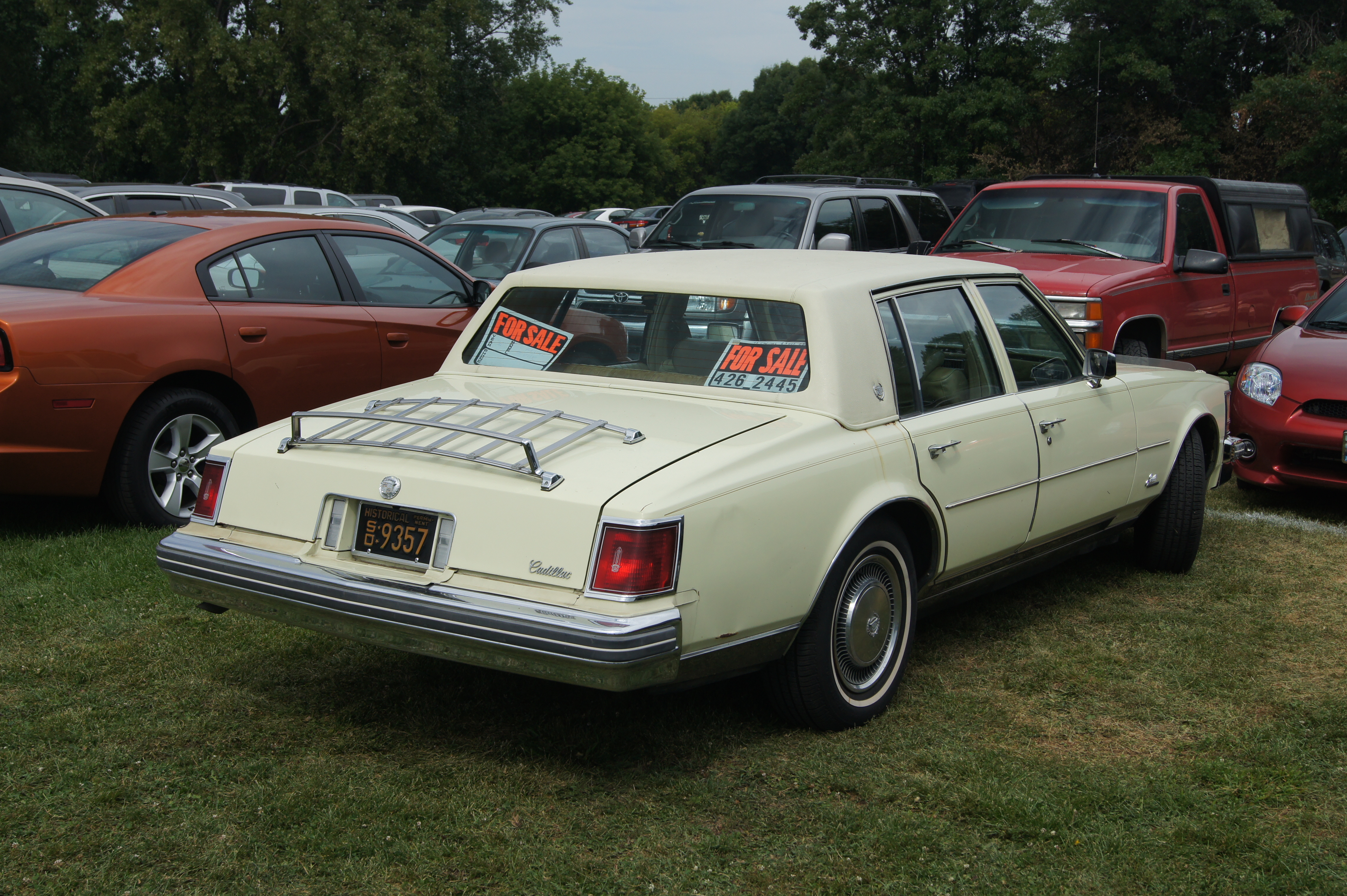
11. **Cadillac Seville (1976 to 1980)**:The Cadillac Seville, specifically the first-generation models produced from 1976 to 1980, aimed to offer a more compact, globally-competitive luxury experience. However, this era of Seville has earned a notorious reputation, primarily centered around a critical mechanical component that significantly undermines its reliability and investment potential. For those looking to add a Cadillac to their classic car collection, these specific model years should be approached with considerable apprehension.
Stamatis Zotos elucidated the primary pitfall of these vehicles, explaining, “These models are notorious for their Oldsmobile-sourced 350 diesel engine, which was prone to failure.” An engine that is inherently “prone to failure” represents a catastrophic risk for any vehicle, let alone a classic car where repairs are often complex and expensive. The prospect of recurrent or outright engine failure can lead to astronomical repair costs, making the ownership experience incredibly frustrating and financially unsustainable.
Beyond these severe mechanical deficiencies, the overall demand for these particular Cadillac Seville models has significantly diminished over time. This decrease in market interest is a direct consequence of their known reliability issues and the negative reputation of the problematic diesel engine. Low demand directly translates to reduced resale value, meaning that an investment in a 1976-1980 Cadillac Seville is highly unlikely to yield positive returns and will likely prove to be a money pit for the unsuspecting owner. It stands as a stark reminder that even luxury badges can be attached to financially unsound classic car choices.
Beyond these specific models, several overarching financial risks can affect any classic car investment. Being aware of these broader hazards is crucial for mitigating potential losses and ensuring a more informed, protected ownership experience. Let’s explore these critical areas where classic car ownership demands extra vigilance.
Read more about: 14 Classic Luxury Autos Young Professionals Are Smartly Avoiding: Unpacking the Hidden Costs and Why They Pass on These Status Symbols

12. **High Maintenance Costs**:Investing in a classic car is not a one-time purchase; it entails a continuous financial commitment, largely driven by the necessity of ongoing maintenance and upkeep. Unlike modern vehicles designed for minimal intervention, classic cars inherently “require frequent maintenance to stay in good condition,” a reality that prospective owners must fully appreciate. This regular attention is not merely cosmetic; it is fundamental to preserving both the vehicle’s functionality and its investment value.
One of the primary challenges and cost drivers is the sourcing of parts. For many classic models, “Parts can sometimes be hard to find depending on the model, not to mention expensive.” This scarcity means that even routine repairs can escalate in cost, as specialized components might need to be custom-fabricated or painstakingly located through niche suppliers. Additionally, finding a qualified mechanic familiar with older, often idiosyncratic, automotive systems can be tricky. Working with a specialist, while essential for proper care, inevitably adds to the overall maintenance expenditure.
Beyond routine servicing, classic cars frequently require significant restoration projects to preserve their authenticity and value. Such projects, designed to bring a vehicle back to its original glory, “often involve extensive labor and costly materials.” This unpredictable nature of required repairs makes effective budgeting difficult, as unforeseen issues can arise unexpectedly, demanding substantial financial outlays. These significant and often unforeseeable expenses can rapidly “eat into your finances, patience, and peace of mind,” establishing ongoing maintenance as a substantial and unavoidable financial commitment.
Read more about: Undervalued ’80s Imports: 9 Easy-to-Maintain Restoration Gems You Need to Know About

13. **Storage Vulnerabilities**:Proper storage is an absolutely vital, yet often underestimated, aspect of preserving a classic car’s condition and, by extension, its investment value. These vintage vehicles, by their very nature, are particularly delicate and “vulnerable to harsh weather conditions and humidity,” making careful consideration of their environment paramount. Failing to provide an optimal storage solution can lead to irreversible damage and significant financial losses, effectively diminishing the value of your prized possession.
Humidity, in particular, is a silent destroyer of classic cars. Excess moisture in the air “can cause rust and corrosion, particularly in metal components.” Storing a vehicle in a damp or poorly ventilated environment dramatically increases the likelihood of these issues, which are expensive and complex to remediate. Furthermore, “Temperature extremes can lead to cracking in rubber seals and deteriorating paint,” impacting both the vehicle’s structural integrity and its aesthetic appeal. Ensuring controlled storage conditions is therefore imperative for investment protection.
From a financial perspective, achieving proper storage often translates to additional costs. “Proper storage often means renting a garage or climate-controlled storage unit, which can be costly over time.” However, this expense is a crucial safeguard. Conversely, if a classic car is not stored properly, it inevitably leads to “rust, paint damage, and other issues that will be costly to repair,” or worse, can lead to permanent damage that significantly lowers the vehicle’s market value. Adequate protection against dust, debris, and even accidental damage from other vehicles in a shared space is also essential, advocating for an investment in a “climate-controlled space [to] mitigate these risks,” ensuring the vehicle retains its integrity and value.
Read more about: Wheels of Misfortune: 14 SUVs Buyers Wish They Had Walked Away From Before the Test Drive
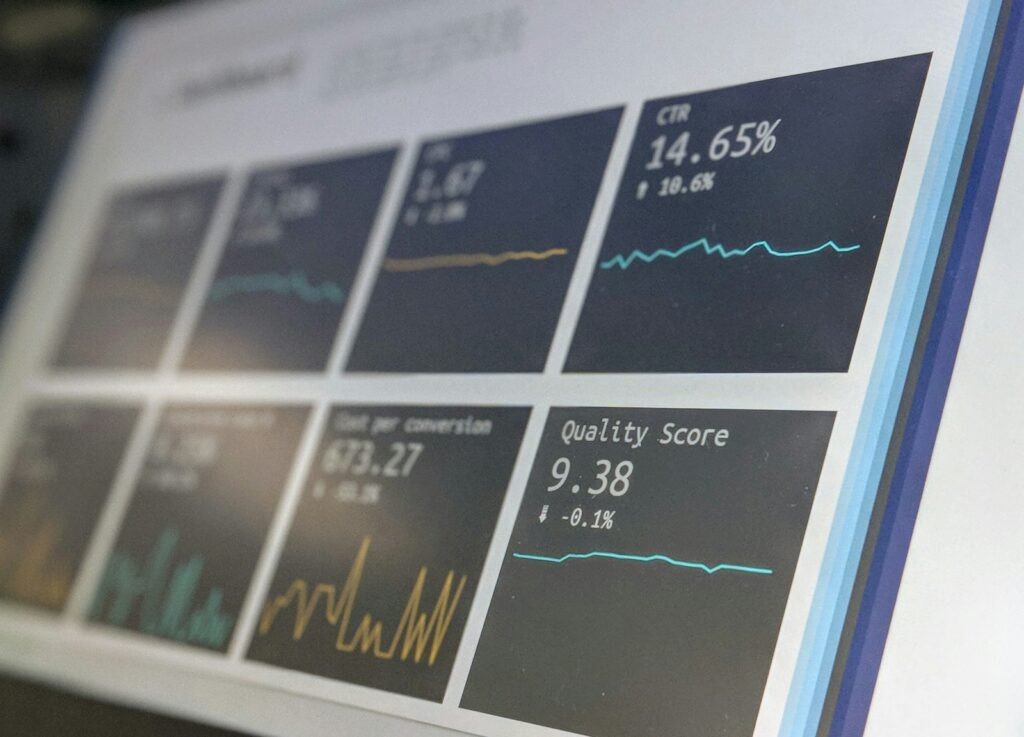
14. **Market Volatility**:The classic car market, for all its romantic appeal, is inherently dynamic and, crucially, “not always predictable.” This market volatility represents a significant risk for investors, as the value of these cherished vehicles can fluctuate rapidly and significantly. Understanding these variations is essential for anyone hoping to navigate this intricate market successfully, which is heavily influenced by evolving trends, prevailing economic conditions, and shifts in public interest.
Numerous factors contribute to this inherent unpredictability. “Popularity and value can rise and fall based on trends, economic conditions, and shifts in public interest.” For instance, broader “economic downturns or shifts in buyer preferences can lead to dramatic decreases in the resale value of a vehicle,” sometimes quite suddenly. What might be considered a highly desirable model today “may become less appealing tomorrow, especially as younger buyers enter the market with different tastes and priorities,” fundamentally challenging the assumption of steady return on investment.
This makes it exceptionally “risky to assume a steady return on investment.” Investors need to recognize that classic car values are not static; they “can fluctuate not just seasonally but also within shorter timeframes.” Therefore, a critical component of successful classic car investment is the imperative to stay constantly informed and adaptable to these changing market circumstances. Without a keen awareness of these volatile dynamics, investors risk making decisions based on outdated trends or optimistic projections that fail to materialize.
Read more about: Regret on the Odometer: 15 Luxury Autos That Become Financial Liabilities Right After You Drive Them Home
15. **Fraud Risks**:Investing in classic cars, like any high-value asset, unfortunately, involves navigating the “potential pitfalls of fraud and misrepresentation.” This risk can profoundly impact the true value and desirability of a vehicle, making it absolutely essential for prospective buyers to remain vigilant and informed to avoid costly mistakes. The classic car market, with its inherent complexities and passionate buyers, can sometimes attract unscrupulous individuals seeking to exploit trust.
Recognizing “common scams in the classic car market is critical.” Some of the most prevalent forms of deception include “odometer rollback,” where sellers illegally tamper with mileage readings to inflate a car’s perceived value. Other significant threats are “misrepresented vehicle history” and the use of “counterfeit documentation,” which can falsely claim authenticity or hide past damages and ownership issues. Investors must ensure the legitimacy and accuracy of all critical data related to the vehicle to protect their financial interests.
To effectively mitigate the risk of fraud, “Verification of the seller’s credentials is paramount.” This means going beyond a simple handshake. Prospective buyers should always insist on “examining the vehicle in person, checking its history with reputable services, and engaging experienced professionals for appraisals.” These critical steps provide layers of protection, helping to uncover discrepancies and authenticate the vehicle’s condition and provenance before any financial commitment is made.
Ultimately, “maintaining a healthy skepticism throughout the buying process is advisable.” Complementing this caution with “comprehensive research and leveraging consumer protection resources” can further shield investors from potential scams. Understanding these classic car investment risks related to fraud is not merely about avoiding losses; it enhances buyer confidence and secures financial interests, ensuring a more transparent and trustworthy transaction.
In the fascinating world of classic cars, the journey from enthusiast to savvy investor is paved with both immense satisfaction and considerable challenges. As we’ve explored, while the allure of appreciation and the joy of ownership are powerful, the path is fraught with specific models to avoid and broader financial risks that demand acute awareness. From the notorious mechanical woes of certain luxury sedans to the pervasive threats of rust, market fluctuations, and outright fraud, every decision requires careful thought.
Read more about: Your Next Road Trip Could Be a Disaster: The Wildest Rental Car Nightmares That Will Make You Rethink Everything
Our aim has been to empower you with objective, detailed, and actionable advice, transforming potential pitfalls into opportunities for informed choices. Remember, the true value of a classic car investment lies not just in its intrinsic beauty or historical significance, but in the diligence, patience, and understanding you bring to its acquisition and care. By approaching the market with open eyes and a well-researched strategy, your passion for classic cars can indeed become a rewarding part of your investment portfolio.

